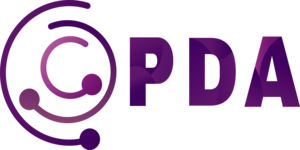
Datafloq News February 27, 2025
Collected at: https://datafloq.com/read/how-to-implement-blockchain-in-supply-chain-management-2/
Blockchain can solve major supply chain issues like inefficiencies, lack of transparency, and fraud. It creates secure, tamper-proof records, improves tracking, and automates processes with smart contracts. Companies like Walmart and Deloitte already use blockchain to cut costs, speed up operations, and ensure compliance.
Key Benefits of Blockchain in Supply Chains:
- Real-time tracking of shipments and inventory.
- Verified authenticity of products to prevent counterfeiting.
- Reduced paperwork and manual processes.
- Faster payments through automated smart contracts.
- Permanent audit trails for better compliance.
Steps to Get Started:
- Identify Weaknesses: Pinpoint inefficiencies like slow documentation or poor inventory visibility.
- Choose a Platform: Options include Hyperledger Fabric (private), VeChain (product tracking), or Ethereum (public).
- Run a Pilot: Test blockchain on a small scale to measure impact.
- Scale Gradually: Expand after successful testing, ensuring integration with existing systems.
Quick Comparison of Blockchain Platforms:
| Platform | Strengths | Best For | Limitations |
|---|---|---|---|
| Hyperledger Fabric | Privacy, high throughput | Large enterprises | Complex setup |
| VeChain | Built-in supply chain tools | Product tracking | Centralized control |
| Ethereum | Public transparency, smart contracts | Decentralized applications | Higher costs |
| Quorum | Fast private transactions | Financial operations | Limited features |
Blockchain is not a one-size-fits-all solution. Start small, measure results, and expand strategically.
Supply Chain Analysis
Finding Supply Chain Weaknesses
Pinpointing critical vulnerabilities in your supply chain can reveal where blockchain technology might make a difference.
Some major challenges include inefficiencies in documentation – paperwork alone can account for up to 50% of container transport costs – and unreliable product authentication. For instance, studies show seafood mislabeling rates can reach 87%, while counterfeit prescription drugs result in $188 billion in lost revenue annually .
Here are key areas to review in your supply chain:
- Documentation processes: Assess how much time is spent on manual paperwork.
- Product verification: Examine the effectiveness of current authentication methods.
- Transaction complexity: Identify how many intermediaries are involved.
- Compliance tracking: Evaluate how regulatory reporting is managed.
- Inventory visibility: Measure your ability to track items in real time.
Once these weaknesses are mapped out, you can evaluate how blockchain might address inefficiencies and strengthen your operations.
Measuring Blockchain Benefits
To gauge the impact of blockchain, compare your current performance with metrics achieved after implementation.
| Metric | Traditional Methods | With Blockchain | Improvement |
|---|---|---|---|
| Information Exchange | Baseline | Enhanced | 25.7% |
| Data Accuracy | Baseline | Improved | 19.8% |
| Operational Costs | Baseline | Reduced | 13.6% |
“Blockchain can greatly improve supply chains by enabling faster and more cost-efficient delivery of products, enhancing products’ traceability, improving coordination between partners, and aiding access to financing.” – Vishal Gaur and Abhinav Gaiha
Studies suggest that adopting distributed ledger technology could increase global trade volume by 15% and contribute up to a 5% boost in U.S. GDP .
Setting Implementation Goals
Start with a clear and actionable use case that delivers measurable outcomes.
“Begin with the end in mind. Get prescriptive with a use case that is going to deliver results [and] best practices, and deliver more than cool technology.”
Define specific goals to guide your blockchain adoption:
- Transparency metrics: Set targets for improving supply chain visibility.
- Cost savings: Identify expected reductions from automation.
- Authentication benchmarks: Establish time goals for verifying products.
- Compliance improvements: Outline objectives for faster reporting.
- Stakeholder engagement: Plan milestones for onboarding partners.
“Evaluate if blockchain is the right technology for your use case. Blockchain is not a hammer for every nail, but it is uniquely able to provide capabilities that other technologies cannot.”
Monitor your KPIs regularly to ensure the technology is driving real business value .
Blockchain Platform Selection
Top Blockchain Platforms Compared
Here’s a breakdown of some major blockchain platforms tailored for enterprise supply chains:
| Platform | Key Strengths | Best For | Limitations |
|---|---|---|---|
| Hyperledger Fabric | Private networks, high throughput, customizable | Large enterprises needing privacy | Complex setup |
| VeChain | Built-in supply chain tools, RFID integration | Product authentication | Centralized control |
| Ethereum | Strong smart contracts, large developer community | Applications requiring public transparency | Higher costs |
| Quorum | Fast private transactions, Ethereum compatibility | Financial operations | – |
Now let’s explore how public and private networks influence platform decisions.
Public vs Private Networks
Private blockchains come with several advantages:
- Faster transaction speeds than public blockchains
- Lower energy use, reducing operational costs
- Controlled access for participants
- Better privacy for sensitive data
On the other hand, public blockchains excel in decentralized security, full transparency for stakeholders, permanent record-keeping, and leveraging network effects.
“Confidentiality is the measure of ensuring that only entities participating in a particular transaction will have knowledge and access to it.” – Lukas Kolisko
Platform Selection Criteria
To pick the right blockchain platform, match your choice with your business needs and goals. Focus on these critical factors:
- Scalability: Can the platform handle your current and future transaction volumes?
- Security: Look for strong access controls and encryption.
- Interoperability: Ensure the platform works with your existing systems.
- Cost Structure: Evaluate transaction fees and implementation costs.
Also, prioritize platforms with features designed for supply chains, such as smart contract automation, real-time tracking, IoT integration, and customizable permissions.
How to Implement Blockchain in Supply Chain Management
Implementation Planning
After selecting the right blockchain platform, the next step is to plan the implementation. This involves setting clear timelines, defining team roles, and outlining integration strategies.
Project Timeline Creation
Rolling out blockchain in a supply chain typically occurs in three phases over 12’18 months:
- Assessment Phase (2’3 months)
- Document current workflows.
- Pinpoint areas where blockchain can add value.
- Identify key integration points.
- Platform Development (4’6 months)
- Set up the blockchain infrastructure.
- Develop and deploy smart contracts.
- Example: TradeLens used blockchain for container tracking and warehouse automation .
- Integration and Testing (3’4 months)
- Link blockchain with existing supply chain systems.
- Conduct rigorous testing to ensure functionality.
- Example: De Beers implemented blockchain to track diamonds .
Once the timeline is finalized, assemble a team to oversee and execute the project.
Team Structure and Roles
A well-rounded team is crucial for a successful implementation. Aim for a group of 3’12 members, covering the following roles:
| Role | Responsibilities | Expertise |
|---|---|---|
| Implementation Lead | Oversee the project and manage stakeholders | Supply chain management |
| Technical Architect | Design the platform and plan integrations | Blockchain development |
| Business Analyst | Map processes and gather requirements | Supply chain operations |
| Data Integration Specialist | Handle system integration and data standardization | Enterprise software integration |
| Security Expert | Ensure privacy and control access | Cybersecurity certification |
This team ensures that all weak points in the supply chain are addressed systematically during the integration process.
Data Integration Methods
A 2023 KPMG survey found that 87% of organizations prioritize improving supply chain visibility . Effective data integration is key to achieving this goal. Here’s how:
- API Development: Build standardized APIs to enable smooth integration with legacy systems. Ensure secure data transmission and real-time validation.
- IoT Integration: Link IoT devices to provide real-time data updates, enabling automated tracking and verification.
- Smart Contract Implementation: Use smart contracts to automate tasks like payment processing, inventory updates, compliance verification, and shipping documentation.
“A ‘permissioned blockchain’ offers the potential of recording these transactions (both physical and virtual) on a shared and immutable ledger, which enables the capture, validation, and sharing of data across these interlinked companies. Ultimately, all parties have access to a seamless exchange of value and a single source of truth that was previously impossible.”
Testing and Expansion
Initial Pilot Project
Start with a pilot project to test blockchain’s impact on your supply chain. Focus on a single process or product line to reduce risks and gain useful insights.
A great example is DLT Labs‘ and their DL Freight’ system for Walmart Canada. They launched a pilot specifically for delivery tracking and invoice automation. In just 60 days, they configured the system, and within six months, it processed over 200,000 invoices and managed payments worth hundreds of millions .
Here’s how to approach your pilot:
- Set up the blockchain system and train key stakeholders.
- Process transactions and validate data in real time.
- Measure performance using metrics like transaction speed, data accuracy, and feedback from stakeholders.
These steps ensure you build a solid foundation for tracking the system’s performance.
Performance Metrics
Keep an eye on critical KPIs like transaction speed, error rates, and data accuracy. For instance, Walmart reduced food source tracking time from several days to just seconds using blockchain . Similarly, Chainyard and IBM’s Trust Your Supplier platform used Hyperledger Fabric to slash vendor onboarding time from 60 days to just 3 .
Once the pilot proves successful, you can move on to scaling the solution across your entire supply chain.
Full-Scale Deployment
“The financial and operational incentives for adopting DL Freight’ are significant they include cost savings and faster time to process payments. And in our view, despite assertions that conventional systems and solutions could solve this puzzle, it would not have been possible without blockchain.” Neeraj Srivastava, DLT Labs’ co-founder and chief technology officer
When scaling up, focus on these key areas:
- Technology Integration
Make sure your blockchain platform works smoothly with existing systems using standardized APIs and middleware. BMW‘s supply chain implementation is a great example of how integration can improve transparency across multiple points . - Stakeholder Onboarding
Create detailed training programs to get all participants on board. Pfizer‘s collaboration with IBM for secure drug tracking shows how engaging stakeholders is critical for success . - Continuous Monitoring
Regularly track performance against your KPIs, such as transaction speed, data accuracy, and system adoption rates. With the blockchain supply chain market expected to hit $9.77 billion by 2030 , consistent monitoring will be key to staying competitive.
Conclusion
Implementation Checklist
Here’s a quick guide to get started:
- Identify supply chain weaknesses: Pinpoint areas where blockchain could make a difference.
- Choose the right platform: Decide between public and private blockchain networks based on your needs.
- Involve stakeholders early: Streamline processes, as paperwork can account for 15%’50% of transport costs.
- Run a pilot program: Start with a small-scale, controlled rollout to test the waters.
These steps can help you set a solid foundation for integrating blockchain into your supply chain.
Upcoming Blockchain Developments
Blockchain technology is advancing rapidly, fueled by major trends like:
- AI Integration: Machine learning is boosting blockchain with real-time analytics and predictive tools .
- Smart Contracts: Automated agreements could cut processing costs by up to 90%, according to Capgemini .
- Cross-Platform Standards: Efforts are underway to create universal standards for seamless compatibility between blockchain networks .
The market is expected to grow significantly, jumping from $2.08 billion in 2024 to $9.77 billion by 2030 .
Next Steps
Here’s how to move forward:
- Build a solid business case: Highlight specific supply chain challenges that blockchain can address.
- Start small: Focus on improving one process to showcase immediate benefits.
- Measure outcomes: Track both numbers (cost savings, efficiency) and softer gains like improved transparency and trust.
“The ledger entries are only as reliable as the quality of the data that is entered” – Stephanie So, Co-founder and Chief Development Officer, The Geeq Project
Ensuring accurate data entry and verification from the start is crucial for success.

Leave a Reply